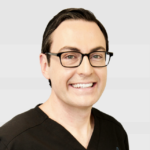Frequently Asked Questions
This can vary based on many factors including the depth of the laser, the intensity of the treatment, the area treated, the patient’s skin type, and the patient’s ability to heal. Topical emollients and soaks are used to help speed up healing, which allows most people to have less than a week of downtime. Some people even return to their regular routine after just three days.
There is a range of anesthesia options available, including local anesthesia, light sedation, and general anesthesia. In the majority of cases, ablative laser resurfacing can be done with a combination of topical anesthetic cream and local anesthesia. In deeper treatments, light sedation is often used as well. Light sedation medications may be administered orally or through IV. Dr. Ransom will help each patient determine the best anesthesia option for them.
People who have skin issues like fine lines, wrinkles, sun spots, acne scars, and poor skin texture can all be excellent candidates for ablative laser resurfacing. Patients who have had previous laser treatments that left scars or patients with darker skin pigmentation are typically not good candidates for this type of skin resurfacing, as it can cause unwanted color or texture changes in the skin. A Medical-Grade skincare regimen is often recommended before treatment begins. This skincare regimen can prepare skin for the treatment and may also help patients to get the best results from the treatment.
This varies by patient. A single ablative laser resurfacing treatment can be done if the patient is able to devote the necessary time to recover. The treatment can also be spaced out over multiple sessions in a 3-6 month period.
Ablative laser resurfacing can be a highly effective way to deal with fine lines, wrinkles, sun spots, and acne scars. Tiny blood vessels (telangiectasias) can also be treated effectively with ablative laser resurfacing. When patients have facial folds due to age-related volume loss, ablative laser resurfacing can help. It stimulates the deeper layers of skin, which triggers new collagen creation. The new collagen fills in folds, scars, and wrinkles.
Dr. Evan Ransom is an Ivy League-educated and Ivy League trained Facial Plastic and Reconstructive Surgeon. He is a Double Board Certified Head and Neck Surgeon and Facial Plastic and Reconstructive Surgery and fellowship-trained in facial plastic, reconstructive, and laser surgery. His practice is in the San Francisco Bay Area, serving patients from San Francisco, Oakland, Marin County, Palo Alto, Silicon Valley, Walnut Creek, the East Bay, and all over Northern California.
 (415) 550-1077
(415) 550-1077 San Francisco
San Francisco

